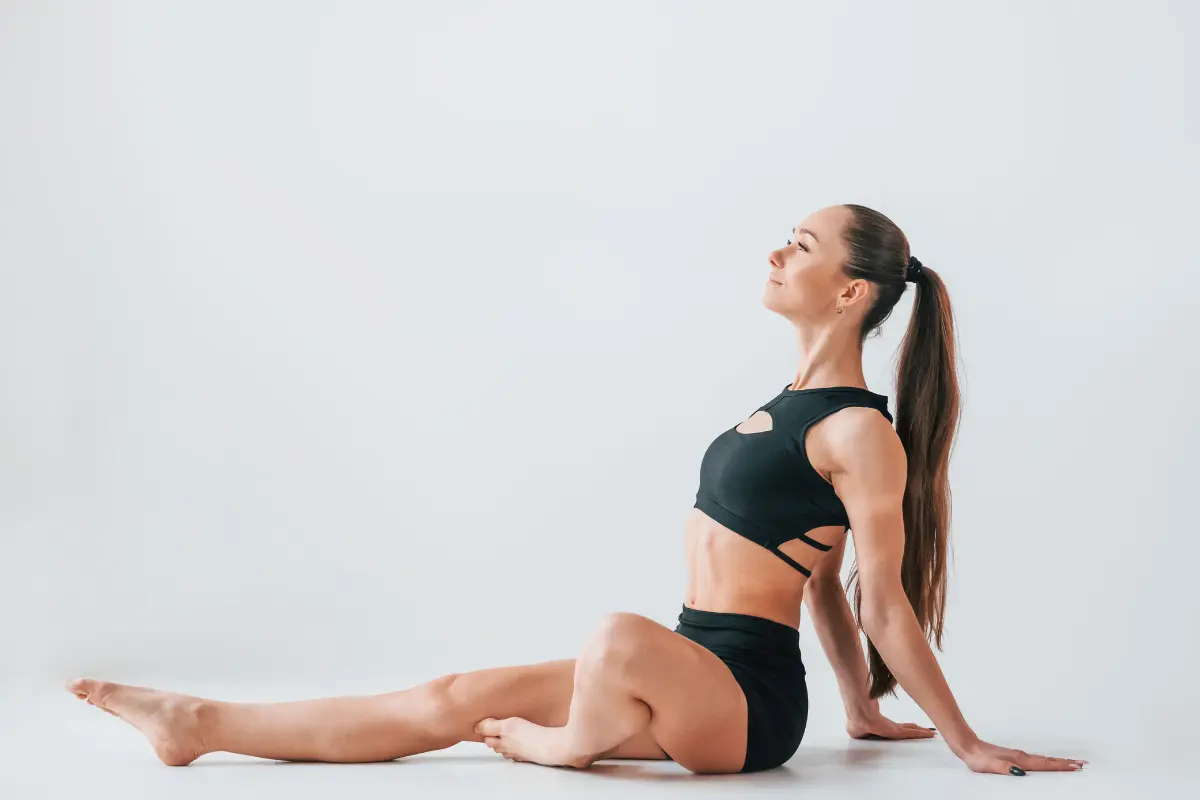The aesthetics of Olympic gymnasts represent one of the most impressive physiques achievable through pure athletic training. Wide backs, defined arms, powerful shoulders, visible abs, and the distinctive dense muscularity that comes from years of bodyweight mastery. The remarkable part? Gymnasts achieve this without ever touching a barbell. They build their physiques using bars, rings, their bodyweight, and smart training strategy.
For anyone interested in building a similar physique without access to traditional gyms, understanding the principles that create the gymnast physique is essential. It’s not mysterious. It’s biology responding to specific training stimulus combined with smart body composition management.
The Distinctive Elements of Gymnast Physiology
Gymnast physiques share consistent characteristics: exceptionally wide shoulders and lats, developed triceps, visible core definition, lean body fat levels, and relatively modest leg development compared to upper body. This isn’t accidental. It’s the natural result of how gymnastic training loads different muscle groups.
Rings work creates extraordinary shoulder and back width. Iron cross holds, muscle-ups, and various ring progressions demand tremendous latissimus and shoulder development. Parallel bar work heavily emphasizes triceps. Floor work and core holds demand impressive abdominal development. The training logically produces these characteristics.
Leg development tends to be less dramatic because traditional gymnastics training emphasizes relative strength rather than leg hypertrophy. This creates the distinctive upper-body-dominant aesthetic gymnasts are known for.
The Structural Requirements
Building a gymnast physique requires consistent training on bars and rings. A pull-up bar is minimum. A full gymnastics setup with rings, parallel bars, and dip stations creates optimal training conditions. Without access to bars, achieving the full gymnast aesthetic becomes significantly harder.
The investment in equipment is worth considering. A pull-up bar costs $50 to $200. Rings cost $50 to $150. A dip station costs $100 to $300. These are one-time investments that enable years of training. Professional gymnasts have access to expensive facilities, but you don’t need pro-level equipment to build impressive muscularity.
The Training Requirements
Gymnast physiques aren’t built through casual training. Olympic gymnasts train 15 to 20+ hours weekly. Street workout athletes training full-time commit similar volumes. You don’t need this much to build impressively, but you need consistent, progressive, intensive training.
A serious calisthenics program aimed at gymnast aesthetics requires training 4 to 6 days weekly. Each session involves progressive pulling movements (pull-ups, muscle-ups, front levers), pushing movements (dips, handstand progressions, planche work), and core work. Multiple months of dedicated training create noticeable development. Years of consistent training create the impressive physiques you see.
Managing Weak Points
One major challenge with gymnastics training is that leg development receives minimal direct stimulus. If building a balanced physique is important to you, add strategic leg work: single-leg progressions like pistol squats, weighted vest training, or minimal equipment like resistance bands. This prevents the extremely upper-body-dominant look while maintaining the calisthenics aesthetic.
Calf development also requires intentionality. Bodyweight alone provides insufficient calf stimulus. Weighted vests, single-leg calf raises, or strategic calves-specific work prevents your otherwise impressive physique from looking incomplete at very low body fat.
Body Composition is Non-Negotiable
Gymnasts look impressive not just because they’re muscular but because they’re lean. Very lean. Most competitive gymnasts maintain body fat levels around 8 to 12%. This is genuinely low and requires consistent nutrition strategy and training volume to achieve and maintain.
You can’t build a gymnast physique while overweight. The definition, the aesthetics, the appearance of athletic power all require your musculature to be visibly defined. This means managing body composition through consistent training, adequate protein intake for muscle development, and caloric management that supports leanness.
The Timeline Reality
Impressive gymnast-level physiques require years of consistent training. Don’t expect to look like an Olympic gymnast after 3 months. After 12 months of quality calisthenics training, you’ll look noticeably athletic. After 2 years, you’ll look genuinely impressive. After 5+ years of consistent, progressive training, you can approach elite-level aesthetics.
Accept this timeline. Rush the process through shortcuts, and you sacrifice the actual development. Train consistently, manage body composition, progress your training systematically, and accept that impressive physiques require invested time.
Starting Your Gymnast Physique Journey
Start with pull-up and dip progressions. Master basic movements before chasing extreme variations. Build consistency through training 4 to 5 days weekly. Gradually add complexity as you progress. Use minimal equipment strategically to address limitations (weighted vests for leg development, rings for shoulder width).
Manage body composition through consistent training and appropriate nutrition. Expect slow, steady progress. The gymnast physique is built through years of dedicated bodyweight training, not through shortcuts or quick fixes. But the result is distinctive, impressive, and absolutely achievable without ever entering a commercial gym.




